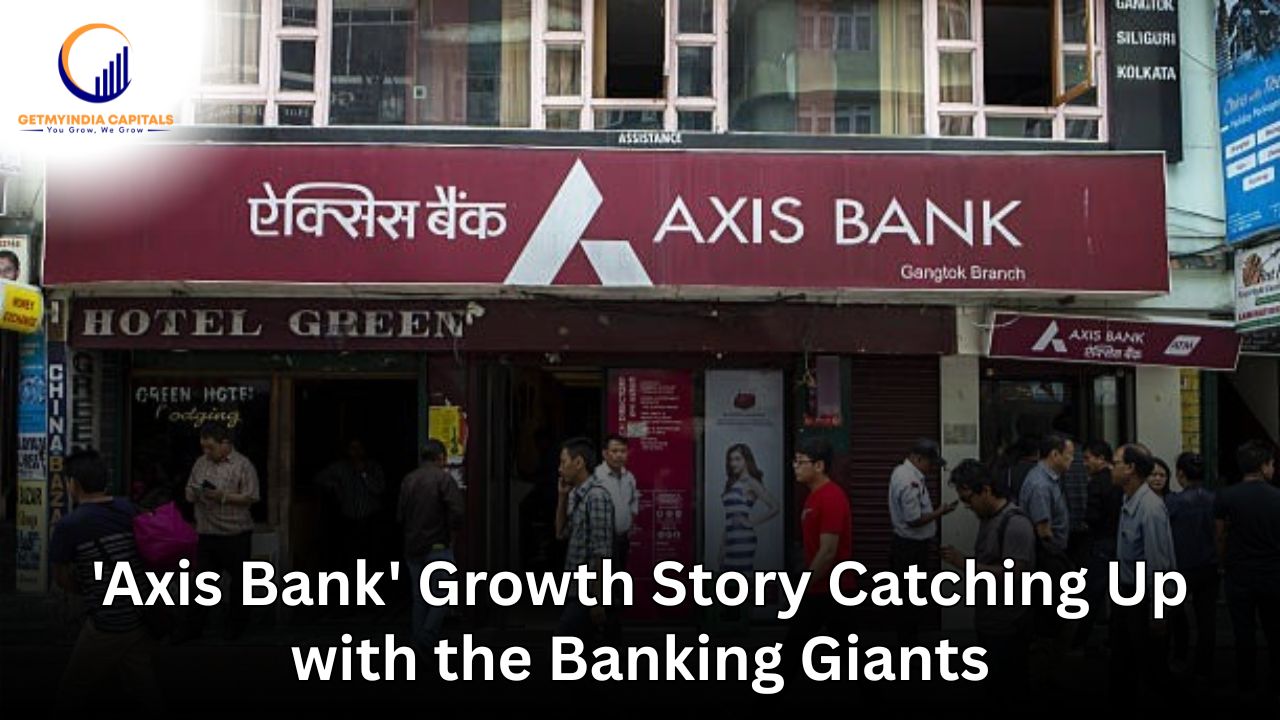Introduction
Axis Bank declared its quarterly results after the close of Thursday trade and on Friday, the share declined nearly 3.5 % to ₹1,165, on a day when investors were very cautious, given the war-like between India and Pakistan. The Axis Bank stock had hit a 52-week high of ₹1,339.6 on 12 July 2024.
Closing the Gap – Axis Bank’s Strategic Moves against Major Rivals
Axis Bank has emerged as one of the most ambitious players in India’s private banking landscape, steadily narrowing the gap with industry leaders like HDFC Bank and ICICI Bank. In recent years, the bank has executed a series of strategic initiatives from acquiring Citibank’s consumer business in India to accelerating digital transformation and expanding its retail lending footprint. Its focus on strengthening asset quality, boosting CASA deposits, and deepening customer engagement has begun to reflect in improved financial metrics. As competition intensifies in the sector, Axis Bank’s calculated bets could redefine its standing in the market and potentially disrupt the existing pecking order.
Performance in the March 2025 quarter
For a key performance metric, net interest margin (NIM), for Axis Bank, its domestic Net Interest Margin (NIM) was 4.08% in the fourth quarter of FY 25 vis-à-vis 4.16 % a year earlier. HDFC Bank, the largest private sector bank, its core net interest margin was 3.65% on interest earning assets in the fourth quarter of FY 25 vis-à-vis 3.63 % a year earlier. And in the case of ICICI Bank, second largest private sector bank, its NIM was 4.41 % in the March 2025 quarter vis-à-vis 4.4 % a year earlier. Meanwhile, Axis Bank grew its advances in the March 2025 quarter by nearly 7.8 % y-o-y to ₹10.4 lakh crore helped by strong demand for credit from SME and mid-corporates. Bigger rival HDFC Bank’s gross advances grew 5.4 % y-o-y to ₹26.4 lakh crore in the fourth quarter of FY 25 while ICICI Bank’s total advances grew at 13.3 % y-o-y in the March 2025 quarter to ₹13.41 lakh crore.
Asset quality of these leading private sector banks has been more or less stable in the March 2025 quarter Axis Bank’s % of net NPAs was 0.33 % in the fourth quarter of FY 25 vis-à-vis 0.31% a year earlier. HDFC Bank’s percentage of net NPAs to net advances was 0.43 % in the fourth quarter of FY25 vis-à-vis 0.33 % a year earlier.
However, Axis Bank’s other operating expenses grew 7.5 % y-o-y to ₹6,876 crore in the March 2025 quarter and it resulted in the bank’s standalone net profit at ₹7,117.5 crore in the quarter under review, broadly flat on a y-o-y basis. ICICI Bank grew its standalone net profit nearly 18 % y-o-y to ₹12,629.6 crore in the March 2025 quarter.
ICICI Bank also had a superior return on assets (annualized) of 2.52 % for the March 2025 quarter while for HDFC Bank it was 1.94% in the quarter under review and for Axis Bank it was 1.83%. Given the numbers, it’s clear that Axis Bank is still trailing its larger peers, especially ICICI Bank.
Outlook going forward
The RBI had cut repo rates by 25 basis points to 6 % in its monetary policy review earlier this month. Apart from RBI, global central banks like the ECB had also recently cut rates at a time when growth risks for the global economy have increased considerably with the tariff war that has been waged by the Trump administration over the past few weeks.
The RBI has also projected real GDP growth at 6.5 per cent for 2025–26 for the economy and that is broadly in tune with the previous financial year. To protect NIMs, several private sector banks have recently cut interest rates on savings rates. In addition, higher cost fixed deposit schemes are also being curtailed.
Axis Bank has more than 5,870 branches at the end of FY25 and they will play a key role in attracting low-cost deposits as well as growing the loan portfolio, going forward. Investors will also be closely monitoring if the current global trade war leads to a rise in bank NPA ratios here.
Investors on Dalal Street
Axis Bank trades at a P/E of nearly 12.5 times estimated standalone earnings for FY 26. HDFC Bank trades with a P/E of nearly 21 times estimated standalone earnings for FY 26 while ICICI Bank trades at 19 times estimated standalone FY 26 earnings.
Axis Bank trades at valuation lower than its bigger rivals. Nevertheless, investors could wait for a correction in these bank stocks before making an investment for the long-term.
Conclusion
Axis Bank has made tangible progress in narrowing the gap with its larger rivals through strategic acquisitions, digital innovation, and a focus on asset quality. However, its March 2025 quarter results reveal that despite advances in market presence and loan growth, profitability and efficiency metrics still lag behind those of HDFC and ICICI Bank. With a stable NIM, improving credit demand, and a large branch network to drive low-cost deposit growth, Axis Bank is well-positioned to strengthen its standing. Yet, elevated operating expenses and modest profit growth suggest the turnaround is still a work in progress. The broader macroeconomic environment shaped by rate cuts, global trade uncertainties, and slowing growth will also influence performance. Given its relatively attractive valuation compared to peers, Axis Bank offers potential upside, but investors may prefer to remain cautious in the near term. Sustained execution and improved returns will be key if the bank is to truly challenge the sector’s front-runners.
GetMyIndia.com RaysVeda.com GetMyStartup.com LawCanal.com ABHAYRAY.COM ZinCob.com

